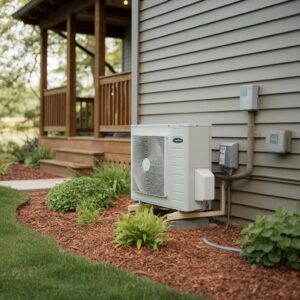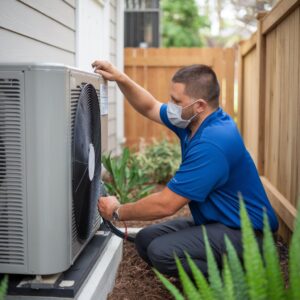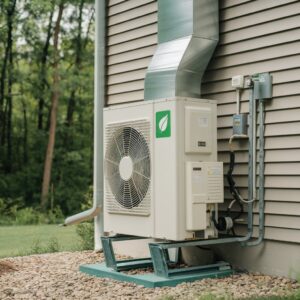A backflow device for irrigation systems is a vital component that protects potable water supplies by maintaining unidirectional flow, preventing contamination from back-siphonage and backpressure. These devices utilize mechanical valves like Atmospheric Vacuum Breakers, Double Check Valve Assemblies, and Pressure Vacuum Breakers to guarantee water purity. Proper installation, regular maintenance, and testing by certified professionals are essential for functionality and compliance with regulations, promising additional insights into safeguarding water systems efficiently.
Key Takeaways
- Backflow devices prevent contamination of potable water by ensuring unidirectional flow in irrigation systems.
- They protect against back-siphonage and backpressure, preventing pollutants from entering clean water supplies.
- Common types include Atmospheric Vacuum Breakers, Double Check Valve Assemblies, and Reduced Pressure Zone Assemblies.
- Installation and maintenance must comply with local plumbing codes for optimal performance and safety.
- Annual testing by certified professionals ensures device functionality and compliance with regulations.
What is a Backflow Device and How Does It Work?
A backflow prevention device is a critical component in irrigation systems designed to protect potable water supplies from contamination due to reverse flow.
It functions by utilizing mechanical valves or air gaps to guarantee water flows in only one direction, effectively preventing back-siphonage or backpressure scenarios.
Common types of backflow include cross-connections or pressure fluctuations, each posing significant risks, such as introducing pesticides or fertilizers into clean water lines.
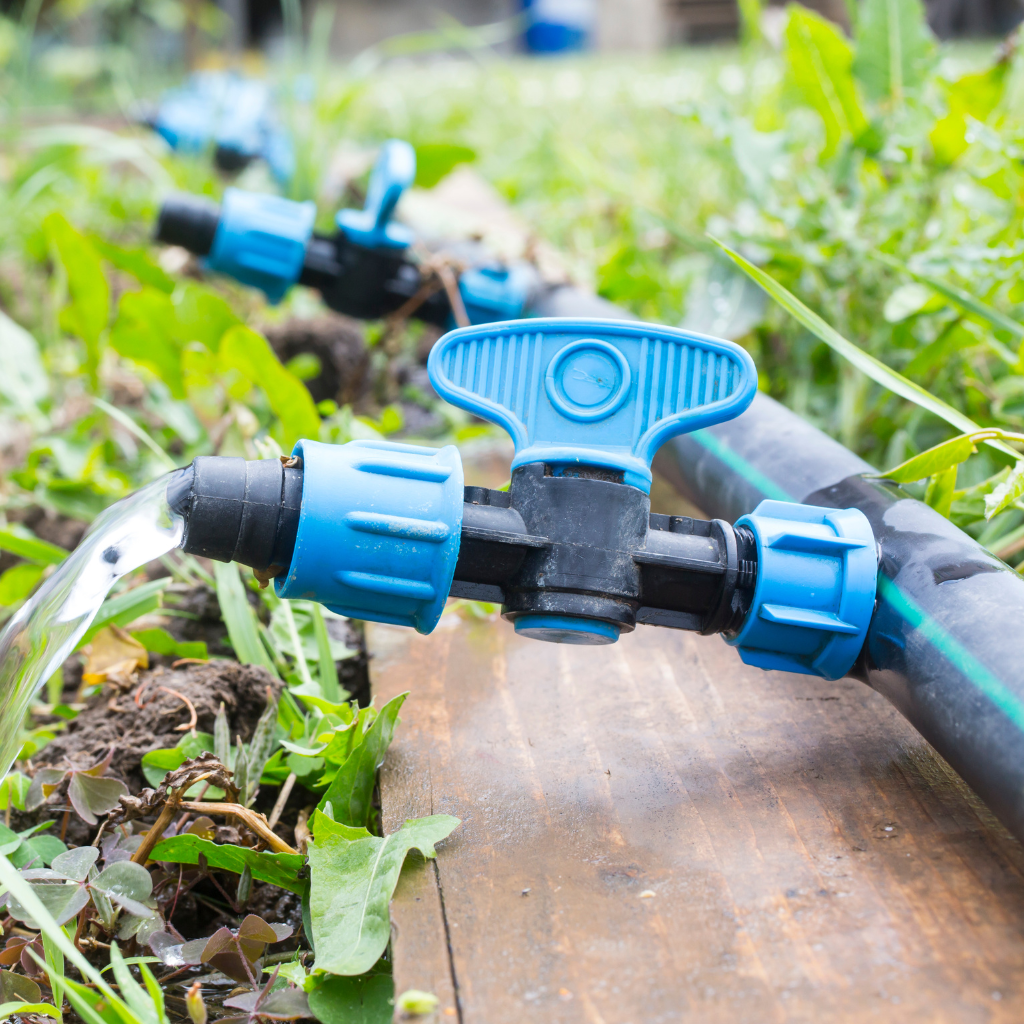
Importance of a Backflow Prevention Device
While often overlooked, the importance of a backflow prevention device in an irrigation system cannot be overstated.
These devices are vital in safeguarding potable water from contamination by non-potable water sources. Irrigation backflow preventers are designed to guarantee that the water supply remains uncontaminated, preventing any backflow that could introduce harmful substances into drinking water systems.
A backflow preventer for irrigation systems acts as a barrier, maintaining the integrity of residential and municipal water lines. By effectively separating potable water from potential pollutants, residential irrigation backflow preventers play a significant role in public health.
The implementation of backflow prevention measures is imperative in safeguarding water quality, making certain that the water supply remains safe for consumption and free from contaminants.
How a Backflow Preventer Functions in an Irrigation System
Understanding the mechanics of a backflow preventer in an irrigation system requires an examination of its components and operational principles.
A backflow preventer functions primarily through a series of valves, including a check valve and vacuum breaker, which are engineered to maintain unidirectional water flow. The system guarantees that irrigation water does not siphon back into the potable water system.
Under normal conditions, pressure in the irrigation system keeps these valves open, allowing water flow. However, if a pressure change occurs, such as a drop in the potable system, the check valve closes, preventing backflow.
The vacuum breaker serves as an additional safeguard, breaking any potential siphon effect. Consequently, the prevention device effectively guards against contamination risks by isolating irrigation water from potable sources.
Common Types of Backflow and Their Risks
In the domain of irrigation systems, backflow poses significant risks that necessitate robust preventive measures.
Irrigation backflow can introduce contaminated water into the potable water supply, particularly during a water main break or pressure fluctuations. To mitigate these risks, residential irrigation systems often employ various backflow preventers, including double check valves, reduced pressure zone assemblies, and pressure vacuum breakers.
Each backflow assembly serves to maintain system integrity by preventing reverse flow. A double check valve offers dual protection, while a reduced pressure zone provides advanced leakage detection.
Alternative methods, like an air gap, physically separate water sources, eliminating contamination risks. Selecting the appropriate backflow preventer is essential for safeguarding water quality and ensuring compliance with regulatory standards.
Why is Irrigation Backflow Prevention Crucial?
Irrigation backflow prevention is essential to safeguarding potable water from contamination, which can occur when non-potable water reverses flow into the public water supply.
Understanding backflow incidents involves recognizing the conditions, such as backpressure and back siphonage, that facilitate the unwanted reversal of flow.
The impacts of backflow on water systems are profound, as they can introduce pollutants and pathogens, compromising water quality and public health.
Protecting Potable Water from Contamination
Although often overlooked, the prevention of backflow in irrigation systems is a critical measure necessary to safeguard potable water supplies from potential contamination.
An irrigation backflow valve, or backflow preventer, is an essential component ensuring a potable water source remains untainted by irrigation system backflow. These backflow devices are engineered to prevent backflow, thereby maintaining the integrity of a water system that delivers clean water to consumers.
Without adequate protection, irrigation water, which may contain fertilizers, pesticides, or other pollutants, poses a significant risk to the public water supply. Consequently, the implementation of an effective backflow preventer is essential in preventing cross-contamination between irrigation and potable water infrastructures, ensuring that the public water supply remains safe for consumption.
Understanding Backflow Incidents
How does backflow occur in irrigation systems, and why is prevention essential? Backflow incidents arise when water flows in the reverse direction due to a drop in pressure within the plumbing system or a surge in the water main. Such events can introduce unsafe water from non-potable water systems into the drinking water supply. An irrigation backflow device or backflow preventer is crucial to safeguard the integrity of water lines and protect the water source from contamination.
| Cause | Effect | Solution |
|---|---|---|
| Pressure drop | Reverse flow in water lines | Install a backflow preventer |
| Water main surge | Unsafe water reaches potable supply | Use an irrigation backflow device |
| System malfunction | Contaminated water ingress | Regular maintenance |
Incorporating these devices guarantees the plumbing system remains secure against potential hazards.
Impacts of Backflow on Water Systems
Backflow incidents in irrigation systems present significant risks to public health and infrastructure integrity. A backflow event occurs when water pressure changes, causing contaminated water to flow backward into the potable supply. This can happen due to back pressure or reduced pressure in the irrigation network.
Implementing a backflow irrigation valve, such as a double check valve assembly, is critical in mitigating these risks. These preventers guarantee that non-potable water from a sprinkler system does not merge with clean water sources. By maintaining a barrier against potential contaminants, these devices protect both the environment and human health.
The absence of a reliable preventer could lead to widespread contamination, emphasizing the necessity of robust backflow prevention mechanisms in irrigation systems.
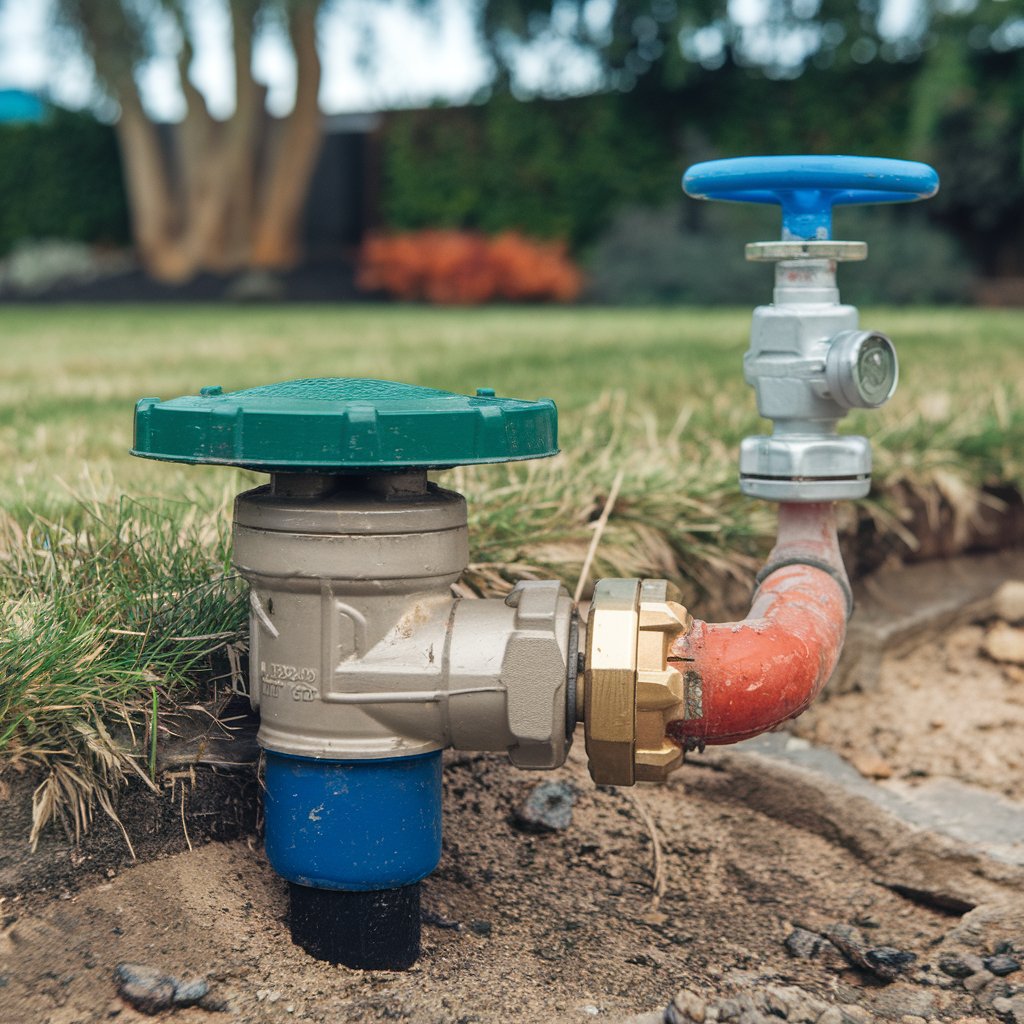
Types of Backflow Prevention Devices for Irrigation Systems
In irrigation systems, various backflow prevention devices are employed to protect potable water supplies from contamination, each tailored to specific conditions and requirements.
The Atmospheric Vacuum Breaker (AVB), Double Check Valve Assembly (DCVA), Pressure Vacuum Breaker (PVB), and Reduced Pressure Zone Assemblies (RPZ) are primary examples, differing in complexity, installation requirements, and the degree of protection offered.
Understanding the operational mechanics, pressure tolerances, and maintenance needs of each device is critical for selecting the appropriate solution for a given irrigation setup.
Atmospheric Vacuum Breaker
An atmospheric vacuum breaker (AVB) serves as an essential component in the arsenal of backflow prevention devices used in irrigation systems. It acts as an anti-siphon valve, preventing contaminated water from the irrigation system from re-entering the clean water service. Positioned between the control valves and sprinkler heads, the AVB is a critical backflow preventer. When the system shuts off, AVBs open to atmospheric pressure, mitigating water hammer effects. These devices are installed at a height above the highest sprinkler head to function efficiently.
| Component | Function | Location |
|---|---|---|
| Atmospheric Vacuum Breaker | Prevents backflow, anti-siphon valve | Above sprinkler heads |
| Control Valves | Regulate water flow | Between AVB and water source |
| Shutoff Valves | Interrupt water flow | Near water service entry |
| Sprinkler Heads | Distribute water | End of irrigation lines |
| Water Service | Provides clean water | Initial connection point |
Double Check Valve Assembly
The Double Check Valve Assembly (DCVA) is a robust and versatile component within the spectrum of backflow prevention devices used in irrigation systems. This device that prevents contamination consists of two spring-loaded check valves, aligned in series, to guarantee reliable protection against backflow.
It is commonly utilized in residential irrigation systems where backflow preventers are installed on the main line. DCVA serves as an approved backflow prevention method, safeguarding potable water supplies from potential cross-connections.
Regular irrigation backflow testing is essential to verify the integrity of this system. Testing and maintenance must be conducted by a certified backflow assembly tester, guaranteeing the functionality and compliance of the device. The DCVA’s design offers a practical solution for diverse irrigation applications.
Pressure Vacuum Breaker
Among the essential components of irrigation systems, the Pressure Vacuum Breaker (PVB) stands out as an important backflow prevention device. It prevents contaminants from entering the potable water supply from irrigation lines.
Key attributes of a PVB include:
- Installation: Positioned above ground, typically at least 12 inches higher than the highest point of the lawn sprinkler systems.
- Functionality: It operates by allowing air into the supply line if a decrease in pressure is detected, effectively preventing back-siphonage.
- Type of Backflow Device: Recognized as one of the best backflow preventers for a home irrigation system due to its simplicity and reliability.
- Maintenance: Requires an annual test to verify functionality and compliance with local codes.
This backflow preventer is essential in maintaining the integrity of the irrigation system.
Reduced Pressure Zone Assemblies
Pressure Vacuum Breakers play a significant role in irrigation systems, but for more complex scenarios requiring advanced protection, Reduced Pressure Zone (RPZ) Assemblies offer a robust solution.
These assemblies are critical backflow preventers designed to maintain water purity by using a differential relief valve that releases water when pressure imbalances occur.
Positioned after the water meter and before the zone control valve, RPZ assemblies safeguard the entire irrigation system against back-siphonage and backpressure, which are common types of backflow.
As a widely used backflow device, they provide superior protection compared to other methods.
Their design guarantees that any contaminants are expelled from the system, maintaining the integrity of potable water supplies and making them essential for high-risk irrigation applications.
How to Conduct Irrigation System Backflow Testing
Conducting irrigation backflow testing involves a systematic approach that begins with understanding the procedural steps necessary for annual testing.
Engaging a certified backflow assembly tester is vital as they possess the technical skills and specialized equipment required to perform precise evaluations.
Interpreting the test results accurately is essential to guarantee compliance with safety standards and to maintain the integrity of the irrigation system.
Steps for Annual Irrigation Backflow Testing
When undertaking the critical task of annual irrigation backflow testing, a series of systematic steps must be followed to confirm compliance with safety standards and to maintain the integrity of the water supply.
The testing process involves:
- Identifying the System: Determine the type of backflow prevention device installed in the system, such as a sprinkler or fire sprinkler system. Understanding the irrigation system may involve checking connections to the fire hydrant.
- Isolating the Device: Shut off the water supply to isolate the backflow preventer from the system.
- Pressure Assessment: Conduct a pressure test to verify the device maintains adequate differential pressure, preventing contamination.
- Verification and Documentation: Verify the operation of all check valves and document the results to confirm they meet local regulatory standards.
Hiring a Certified Backflow Assembly Tester
Employing a certified professional guarantees compliance with local regulations and standards, which mandate that backflow prevention assemblies are tested annually.
Certified testers possess the technical know-how and are equipped with specialized tools to assess the functionality of backflow preventers accurately.
They follow a systematic procedure, including measuring pressure differentials and checking for valve integrity, guaranteeing the device operates effectively to prevent contamination of potable water supplies.
Their certification signifies their proficiency in identifying potential failures that could compromise the system.
Interpreting Backflow Test Results
Understanding the process of interpreting backflow test results is essential for maintaining the efficiency and safety of irrigation systems. The evaluation of test outcomes involves a series of steps to guarantee the integrity of backflow prevention devices.
Key aspects include:
- Pressure Differential: Verify the pressure differential across check valves to confirm they meet the required specifications. A deviation indicates potential valve failure.
- Relief Valve Operation: Assess the relief valve’s performance. It should open at the correct pressure, ensuring no back-siphonage occurs.
- Check Valve Tightness: Inspect for any leaks. Leaks can compromise the backflow preventer’s functionality, allowing contaminants to enter.
- Review of Test Reports: Examine detailed test reports for compliance with local regulations. Ascertain all findings are documented for future reference and corrective actions.
Installation and Maintenance of Backflow Preventers
The installation of backflow devices in home irrigation systems requires adherence to local plumbing codes and precise placement to guarantee peak functionality.
Routine maintenance is essential for backflow preventers, involving regular inspections, cleaning, and testing to prevent potential contamination of potable water supplies.
Troubleshooting common issues, such as reduced pressure or leaks, necessitates a systematic approach to identify and rectify faults, safeguarding the integrity of the system remains uncompromised.
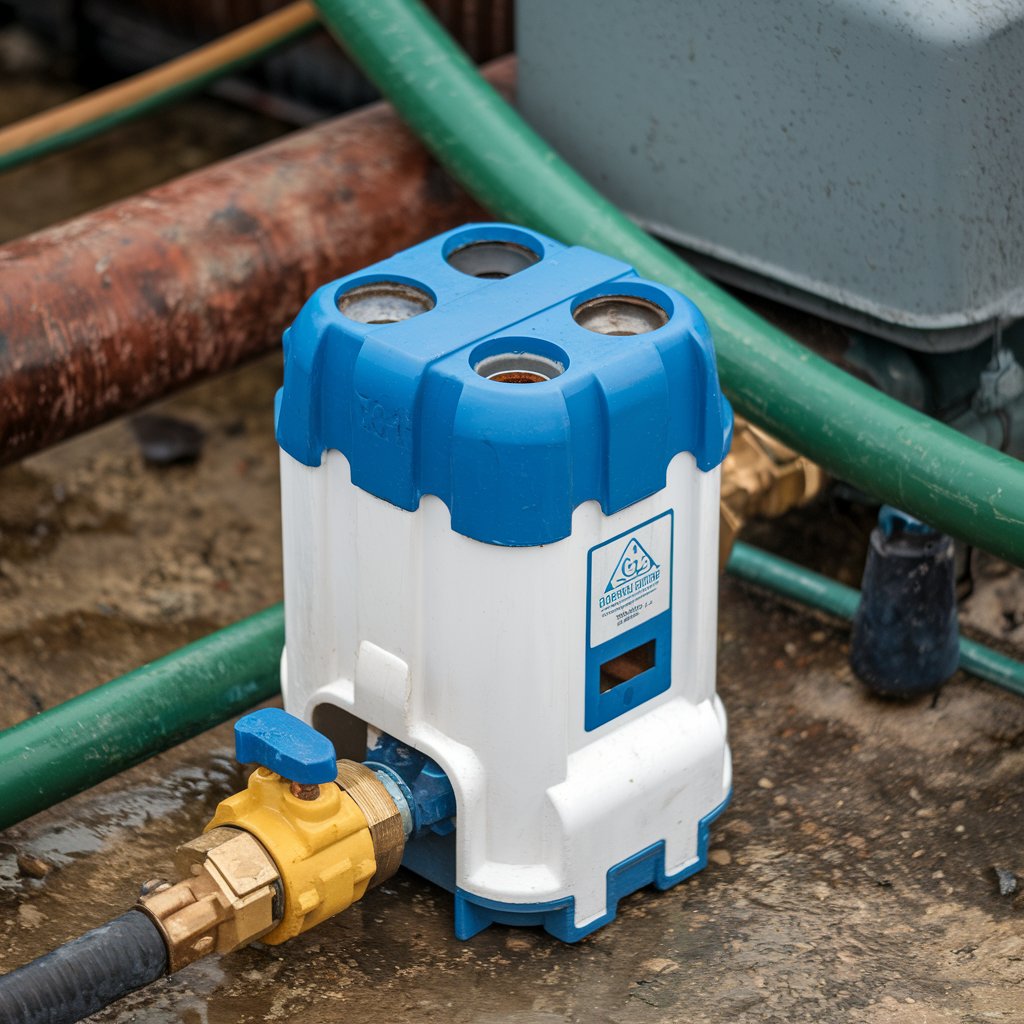
Installing Irrigation Backflow Devices in Home
When incorporating backflow devices into home irrigation systems, it is essential to guarantee these preventers are installed correctly to safeguard potable water supplies.
Installation requires adherence to specific guidelines to guarantee peak functionality. Key considerations include:
- Location: Install the backflow preventer above grade and downstream of the system’s main shutoff valve, guaranteeing it is easily accessible for inspection.
- Selection: Choose a device appropriate for the irrigation system type, considering factors like system pressure and potential backpressure scenarios.
- Connection: Utilize appropriate fittings, guaranteeing a secure and leak-proof connection between the water supply and the irrigation system.
- Testing: Post-installation, conduct testing to verify the device’s performance under varying pressure conditions, guaranteeing reliable operation and compliance with local regulations.
Proper installation mitigates contamination risks, preserving water safety.
Routine Maintenance for Backflow Prevention
Proper maintenance of backflow prevention devices is fundamental in guaranteeing their long-term functionality and effectiveness.
Routine maintenance involves systematic inspection and testing to identify wear, corrosion, or damage. Periodic testing, typically annually, should be conducted by certified technicians using specialized equipment to verify compliance with local regulations.
Cleaning components such as the strainer and check valves are essential to prevent debris accumulation, which can impair operation. Lubricating moving parts enhances performance and extends lifespan.
Technicians should also verify proper installation alignment and confirm that there are no leaks in the assembly. Documenting maintenance activities, including test results and any repairs, is critical for regulatory compliance and historical reference.
Proactive maintenance prevents contamination risks and maintains uninterrupted irrigation system performance.
Troubleshooting Common Issues with Backflow Preventers
Routine maintenance guarantees the perfect operation of backflow prevention devices, yet challenges can arise, necessitating effective troubleshooting strategies. Common issues encountered include pressure imbalances and valve malfunctions. Addressing these problems requires a systematic approach:
- Check for Obstructions: Debris accumulation can impede valve function, requiring periodic inspection and cleaning to restore maximum flow.
- Inspect Pressure Settings: Inconsistent water pressure may cause device failure. Verify settings to confirm they align with manufacturer specifications.
- Test for Leakage: Leaks can arise from worn seals or damaged components. Conduct regular tests to identify and replace defective parts promptly.
- Evaluate Installation: Improper installation can lead to operational inefficiencies. Confirm that the device is correctly aligned and securely connected to the irrigation system.
These steps facilitate the efficient resolution of backflow preventer issues.
Conclusion
To summarize, backflow devices play a critical role in safeguarding potable water supplies by preventing contamination through irrigation systems. Their function is to guarantee unidirectional flow, which is crucial for maintaining water quality standards. Various types of backflow preventers, such as pressure vacuum breakers and reduced pressure zone devices, cater to different system needs. Regular testing and meticulous maintenance are necessary for peak performance and compliance with local regulations, safeguarding both public health and infrastructure integrity.

